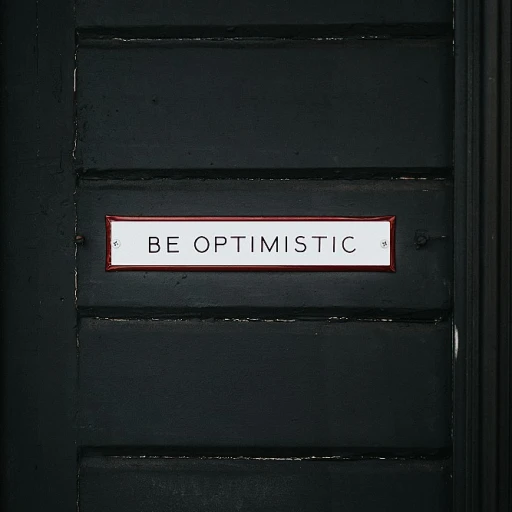The Evolving Role of the CHRO in Business Strategy
CHRO as a Strategic Partner
The responsibility of the Chief Human Resources Officer (CHRO) is gaining momentum as more C-Suite leaders recognize the critical role HR plays in shaping their company’s direction. Gone are the days when CHROs were merely seen as administrative leaders. Today, they stand shoulder-to-shoulder with other executives, driving business success and helping bridge the gap between strategic vision and operational execution. Becoming a pivotal figure, the CHRO aids in crafting strategic initiatives that resonate with the long-term goals of the organization. Their insights into talent management provide essential support in aligning workforce capabilities with strategic objectives. For an in-depth exploration of how the CHRO has evolved into this vital role, visit here.Understanding Human Capital Dynamics
The modern CHRO's role is akin to a symphony conductor, harmonizing the diverse skills of their workforce to achieve business objectives. This harmony is critical in effectively managing human capital and optimizing the workforce. A thorough understanding of hiring trends, employee development, and retention strategies is indispensable. Addressing workforce challenges demands a robust approach where every team member feels part of the bigger picture. The CHRO must foster an environment where talent thrives and aligns with the strategic vision of the business. Ensuring the workforce is equipped with the right skills creates a strong foundation for any future endeavors and prepares the company for unforeseen challenges.Leadership Development: A Strategic Imperative
Leadership development isn't merely about building a leadership pipeline; it's about creating leaders who embody the company's values and objectives. CHROs are increasingly focusing on implementing training programs that blend traditional and innovative learning methods, such as mentoring and digital learning platforms. Developing leaders who are adaptable, empathetic, and visionary can position businesses for sustainable growth. The insights and experiences of CHROs in tailoring these programs are invaluable, ensuring the organization is led by highly capable individuals. For more on this topic, consider exploring additional resources and case studies from strategic HR protégés. Whether it's re-engineering workforce strategies, leveraging data for decision-making, or championing a culture of innovation, CHROs are at the forefront. Their dynamic role continues to influence the broader stroke of business strategy, helping companies not only survive but thrive in an ever-competitive market.Aligning Human Capital with Strategic Goals
Bringing Human Capital Together with Strategic Goals
Aligning human capital with strategic goals isn’t just a task for the human resources department; it’s a serious strategic endeavor for the entire C-suite. A successful alignment syncs every cog in the wheel, from top leadership to the newest recruit, with the company's overarching objectives. When everyone is moving in harmony, it transforms into a powerful force. This harmony is best achieved when the Chief Human Resources Officer (CHRO) leads by example, fostering collaboration across all departments. In doing so, it helps to identify skills and capabilities that can directly contribute to company goals. It’s not just about filling positions but finding the right fit for each role.{{keywords}} John Thompson, CEO of the thriving tech firm Optimum Solutions, shares how aligning the right talent with the company’s vision led to a 30% increase in productivity within just a year. Remember, alignment goes beyond staffing; it’s about shaping organizational culture. When values and goals align, morale and engagement rise. As a C-suite leader, your influence can inspire this change, shaping a workforce that is not only effective but also driven. Seeking more insights on how to bring strategic HR practices to life? Check out CHRO insights for effective business strategy for hands-on advice and proven strategies.Leadership Development: A Strategic Imperative
Developing Leaders for Tomorrow
Leadership development isn't just a checkbox on the HR agenda. It's the heartbeat of a thriving organization. As a CHRO, you're not just nurturing leaders; you're shaping the future. You know that the right leadership can steer the ship through calm and stormy seas alike. So, how do you make sure your leadership pipeline is strong and steady?
Start by identifying potential leaders early. Look beyond titles and focus on those who show grit, resilience, and a knack for inspiring others. These are the folks who can drive your strategic goals forward. It's not about who shouts the loudest but who listens, learns, and leads with empathy.
Creating a Culture of Continuous Learning
In the fast-paced business environment, leaders must keep learning. Encourage a culture where curiosity is rewarded. Offer opportunities for training and development that align with both personal growth and organizational goals. The right strategy can transform potential into performance.
Mentorship: The Secret Sauce
Mentorship is a powerful tool in your leadership arsenal. Pair emerging leaders with seasoned executives who can offer guidance and share experiences. This relationship is a two-way street, offering fresh perspectives to both mentor and mentee. It's a simple yet effective way to pass down invaluable insights and foster a sense of belonging within the organization.
Embracing Diversity in Leadership
Diverse leadership teams bring varied perspectives and innovative solutions. Encourage diversity in your leadership development programs. By doing so, you not only enhance creativity but also reflect the diverse customer base you serve. This approach is a win-win, driving both employee engagement and business success.
Remember, leadership development is not a one-time event but a continuous journey. By investing in your leaders today, you're setting your organization up for success tomorrow. For more on aligning human capital with strategic goals, explore CHRO insights.
Navigating Change Management with CHRO Insights
The CHRO's Guide to Leading Change
Change isn't just an occasional hiccup in business—it's a constant. For CHROs, steering the ship during these shifts is about crafting strategies that account for human emotion, behavior, and adaptation. Remember, when change hits, employees often brace themselves, unsure of what to expect. This is where the CHRO’s experience and insight play an invaluable role. Leading change involves more than announcing a new direction. It's about communication so clear that it leaves no room for second-guessing, transparency that builds trust among team members, and empathy that acknowledges the uncertainty they face. When employees see their leaders operating from a place of understanding and respect, they're more likely to embrace change. Take, for example, a mid-sized company navigating a merger. The CHRO focused on open dialogue, consistently updating employees through town halls and Q&A sessions, quelling anxieties while boosting morale. This proactive approach not only smoothed the transition but also retained talent that might have otherwise sought stability elsewhere.Insights for Supporting Employees
Just as important as clear communication is providing the support systems employees need during change. CHROs should champion resources like mental health programs or retraining sessions that empower staff to both deal with change and see the opportunities it presents. According to Gallup, employee engagement drastically decreases during periods of change if support is not adequately provided (Gallup, 2021). So, it's crucial for CHROs to have their ears to the ground, listening to department heads, collecting feedback, and finding out where support is most needed. Sometimes, a simple acknowledgment of employee concerns and a commitment to address them can mitigate the unease change may bring. With insight and strategy, the CHRO becomes more than just a part of the process—they become an anchor in a sea of change. Leading by example, they ensure transitions are as smooth as possible, paving the way for growth and innovation. This isn't just change management; it's effective leadership. To explore more about the evolving role and strategic influence of CHROs, check out CHRO's Strategic Role.Leveraging Data for Strategic HR Decisions
Using Data to Drive HR Decisions
In the business game, numbers tell the story. For CHROs, making sense of those numbers is key to steering the ship in the right direction. Data isn't just about charts and graphs; it's the heartbeat of strategic HR decisions. When you dig into the data, you uncover insights that can shift your company’s trajectory.
Think about it: with data, you can anticipate workforce trends, understand employee satisfaction, and even predict potential turnover. This isn't just about keeping the lights on; it's about shining a spotlight on the future. CHROs who master data analytics are not just reacting to changes—they're setting the stage for what's next.
Turning Numbers into Narratives
It's not enough to have data; you need to translate it into a story that everyone can understand. This is where the CHRO's role becomes pivotal. By turning raw data into actionable insights, you can align human resources with broader business strategies, ensuring that every decision is backed by solid evidence.
Consider the case of a tech company that used data to overhaul its recruitment strategy. By analyzing data from exit interviews and employee surveys, they identified key areas where they were losing talent. Armed with these insights, they revamped their onboarding process, resulting in a 20% increase in employee retention over the next year.
Tools of the Trade
To make data work for you, it's essential to have the right tools. From HR analytics platforms to AI-driven insights, technology is your ally. These tools can help you sift through mountains of data to find the nuggets that matter.
For example, AI can help identify patterns in employee behavior, flagging potential issues before they become problems. This proactive approach not only saves time but also enhances employee satisfaction and productivity.
Building a Data-Driven Culture
Creating a culture where data drives decisions starts at the top. As a leader, you need to champion the use of data in everyday operations. Encourage your team to rely on data for decision-making and celebrate successes that come from data-driven strategies.
Ultimately, leveraging data isn't just about improving HR functions—it's about empowering your entire organization to make smarter, more informed decisions. By embracing a data-driven mindset, CHROs can play a pivotal role in shaping the future of their companies.
Fostering a Culture of Innovation and Agility
Building a Culture That Embraces Innovation
Creating an environment where innovation thrives is like planting a garden. You need the right conditions, a bit of nurturing, and the patience to see it grow. For a Chief Human Resources Officer (CHRO), this means fostering a culture where ideas are welcomed, and risks are not just tolerated but encouraged.
Start by encouraging open communication. Employees should feel comfortable sharing their ideas, no matter how outlandish they may seem. Remember, today's wild idea could be tomorrow's breakthrough. Google, for instance, famously allows employees to spend 20% of their time on passion projects, which has led to innovations like Gmail.
Agility: The Key to Staying Ahead
In a business world that never sleeps, agility is your best friend. It’s about being quick on your feet, ready to adapt to whatever comes your way. The CHRO plays a crucial role here by ensuring that the workforce is not just skilled but also adaptable.
Consider the case of Netflix, which shifted from DVD rentals to streaming services. This pivot required a massive cultural shift, driven by a workforce ready to embrace change. CHROs can take a leaf out of Netflix's book by promoting continuous learning and flexibility among employees.
Encouraging Cross-Department Collaboration
Innovation doesn’t happen in silos. It’s often the result of collaboration between diverse teams. The CHRO should promote cross-departmental projects, where different perspectives can lead to creative solutions. Think of it as a melting pot of ideas.
Take Apple, for example. Its success is partly due to its ability to blend technology with design, marketing, and customer experience. This synergy is only possible when departments work together seamlessly.
Recognizing and Rewarding Innovation
Recognition is a powerful motivator. When employees see their innovative efforts being acknowledged, it fuels their desire to contribute more. Implementing a system that celebrates both big and small wins can keep the innovation engine running.
Companies like 3M have long understood this, offering awards and incentives for innovative ideas. It’s not just about the reward but the recognition of effort and creativity.
In essence, fostering a culture of innovation and agility is about creating the right environment, encouraging collaboration, and recognizing contributions. It's a continuous process that requires commitment from the top down, with the CHRO at the helm, steering the ship towards a future full of possibilities.





-large-teaser.webp)








